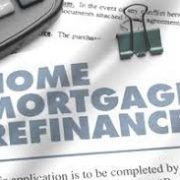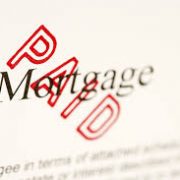Aussie Homeowners Trapped In ‘Mortgage Prison’
Australia’s weaker-than-expected economic performance during the third quarter of 2018 has triggered many rate-cut predictions — however, one expert said that many economists and market watchers are just crying wolf.
In an analysis on Realestate.com.au, economist Nerida Conisbee said there was not enough justification for the Reserve Bank of Australia (RBA) to cut the official cash rate, even with the 1.9% inflation rate due to Australia’s lacklustre economic growth.
“The inflation rate’s fall below 2% is one of the reasons some commentators have speculated that the RBA may soon cut the interest rate. But when the inflation rate drops below 2%, it isn’t an automatic response from the RBA to cut the rate; they also look at the outlook as to where inflation will head without their intervention,” she said.
Despite the muted GDP result and restrained consumer sentiment, unemployment rate remains low. The current market situation will be unlikely to influence the RBA in making its monetary policy decision, Conisbee said.
However, Conisbee believes that a continued uptick in short-term money market interest rates will hugely affect the RBA’s decision.
Australian banks currently face expensive access to overseas funds, affecting their home-loan profit margins. Around 20% of the big four banks’ money is sourced from short-term money markets. To counter the effects of high funding costs, banks are starting to increase their mortgage rates.
This, in turn, could dampen consumer spending and affect the RBA’s inflation target.
AMP Capital chief economist Shane Oliver told Realestate.com.au that this scenario would likely compel the central bank to cut rates.
“The Reserve Bank might say, ‘Well, we don’t want mortgage rates to go up, because that will affect the economy, therefore we will cut the cash rate with the aim of bringing down the debt rate and offsetting the increase in funding cost that the banks have experienced,’” he said.
But the main threat seems to be the negative wealth effect brought about by the housing downturn. Oliver said when house prices fall, people tend to spend less because of their perception that their wealth has declined.
“And that leads to weaker consumer spending, which has the impact of keeping price inflation lower for longer. [Conversely], when property prices were rising in the past, people were happy to spend more and save less, despite lower wages,” he said.
Whether or not to re-finance is a question homeowner may ask themselves many times while they are living in their home. Re-financing is essentially taking out one home loan to repay an existing home loan. This may sound odd at first but it is important to realise when this is done properly it can result in a significant cost savings for the homeowner over the course of the loan. When there is the potential for an overall savings it might be time to consider re-financing. There are certain situations which make re-financing worthwhile. These situations may include when the credit scores of the homeowners improve, when the financial situation of the homeowners improves and when national interest rates drop. This article will examine each of these scenarios and discuss why they may warrant a re-finance.
When Credit Scores Improve
There are currently so many home loan options available, that even those with poor credit are likely to find a lender who can assist them in realising their dream of purchasing a home. However, those with poor credit are likely to be offered unfavourable loan terms such as high interest rates or variable interest rates instead of fixed rates. This is because the lender considers these homeowners to be higher risk than others because of their poor credit.
Fortunately for those with poor credit, many credit mistakes can be repaired over time. Some financial blemishes such as bankruptcies simply disappear after a number of years while other blemishes such as frequent late payments can be minimised by maintaining a more favourable record of repaying debts and demonstrating an ability to repay existing debts.
When a homeowner’s credit score improves considerable, the homeowner should inquire about the possibility of re-financing their current mortgage. All citizens are entitled to a free annual credit report from each of the three major credit reporting bureaus. Homeowners should take advantage of these three reports to check their credit each year and determine whether or not their credit has increased significantly. When they notice a significant increase, they should consider contacting lenders to determine the rates and terms they may be willing to offer.
When Financial Situations Change
A change in the homeowner’s financial situation can also warrant investigation into the process of re-financing. A homeowner may find himself making considerably more money due to a change in jobs or considerably less money due to a lay off or a change in careers. In either case the homeowner should investigate the possibility of re-financing. The homeowner may find an increase in pay may allow them to obtain a lower interest rate.
Alternately a homeowner who loses their job or takes a pay cut as a result of a change in careers may hope to refinance and consolidate their debt. This may result in the homeowner paying more because some debts are drawn out over a longer period of time but it can result in a lower monthly payment for the homeowner which may be advantageous at this juncture of his life.
When Interest Rates Drop
Interest rates dropping is the one signal that sends many homeowners rushing to their lenders to discuss the possibility of re-financing their home. Lower interest rates are certainly appealing because they can result in an overall savings over the course of the loan but homeowners should also realize that every time the interest rates drop, a re-finance of the home is not warranted. The caveat to re-financing to take advantage of lower interest rates is that the homeowner should carefully evaluate the situation to ensure the closing costs associated with re-financing do not exceed the overall savings benefit gained from obtaining a lower interest rate. This is significant because if the cost of re-financing is higher than the savings in interest, the homeowner does not benefit from re-financing and may actually lose money in the process.
The mathematics associated with determining whether or not there is an actual savings is not overly complicated but there is the possibility that the homeowner will make mistakes in these types of calculations. Fortunately there are a number of calculators available on the Internet which can help homeowners to determine whether or not re-financing is worthwhile.
Unfortunately, thousands of Australians are stuck in a “mortgage prison” with new lending criteria leaving them unable to refinance their loans to get a better rate.
Changes in bank rules around living expenses calculations have effectively wiped huge amounts off the maximum a bank will allow you to borrow.
Many people are now finding they originally borrowed more than a bank would lend them under current conditions, meaning they haven’t got the option of shopping around to get a better interest rate — no bank will lend them the amount they need.
Lending criteria has been tightened in the past year. The ongoing Financial Services Royal Commission is likely to tighten the criteria even further — meaning people will be able to borrow even less than they once did.
With homeowners unable to shop around, they can be stuck paying a high interest rate, which will leave them potentially paying tens of thousands, even hundreds of thousands more over the life of a loan.
Recently the Bank of Queensland and Auswide Bank announced they will raise variable mortgage rates as their borrowing costs grow. This follows a warning last month from Credit Suisse that out-of-cycle rate rises were on the table.
Precise numbers of Australia’s mortgage prisoners are hard to come by, but Mozo investment and lending expert Steve Jovcevski told news.com.au that he expected most of them are those who have borrowed and bought in the last five years.
He said the changes in how mortgage eligibility are calculated have made a huge difference for many recent borrowers, particularly as banks start to raise rates.
Before lending criteria was changed, a flat rate for living expenses was applied, resulting in many hopeful homebuyers borrowing much more than they now could.
Mr Jovcevski gave an example of a couple earning $120,000 between them, who bought a home in 2013, borrowing a total of $800,000 at 5% per annum, and who would be paying $4295 a month on their loan, leaving $3680 for monthly expenses.
Even with a pay raise between them bringing their income up to $129,000 the couple now faces a change in rules around living expenses that raises the bar for any borrower.
Previously banks estimated these expenses, with a buffer of 1.5 per cent to safeguard against rate rises. Now they are looking closer at people’s monthly expenditure, and have increased the buffer to 2 per cent.
Under this new criteria, the couple would only be able to borrow $680,000, even though their income hasn’t changed.
And because their mortgage is still more than $680,000, they won’t be able to find another bank to make up the difference — meaning they’re stuck with their original loan paying a high interest rate.
The difference between a 5 per cent home loan and a 3.8 per cent home loan amounts to $149,272 over the life of the loan.
“When a customer is essentially tied to a provider, they are at the mercy of whatever rate rise or conditions the bank chooses to impose. Given the current situation, banks have the power to hold some of their customers prisoners,” Mr Jovcevski said.
“The sad reality is borrowers who need competitive mortgage rates to stay financially afloat are most likely to be mortgage prisoners.”
First Home Buyers Australia director Taj Singh said he was very much aware of the crackdown on borrowing limits and living expenses for borrowers.
The mortgage broker said this was putting many borrowers in a position where they can no longer refinance to get a better rate.
He said given many loans were refinanced every four to six years, this issue would continue to be felt for recent first home buyers.
But Grattan Institute fellow Brendan Coates told news.com.au that the impact of any tighter lending conditions would be largely confined to a small section of borrowers as rising house prices had given borrowing room to homeowners who had been in the market for several years.
He predicted the impact would largely be felt in those who’d borrowed more than 90 per cent of the value of their house, a number which had fallen in recent years from 14 per cent in 2014 to 7 per cent in 2018.
But he did say that if house prices in Sydney and Melbourne continue their fall then the pain could spread to more borrowers.






